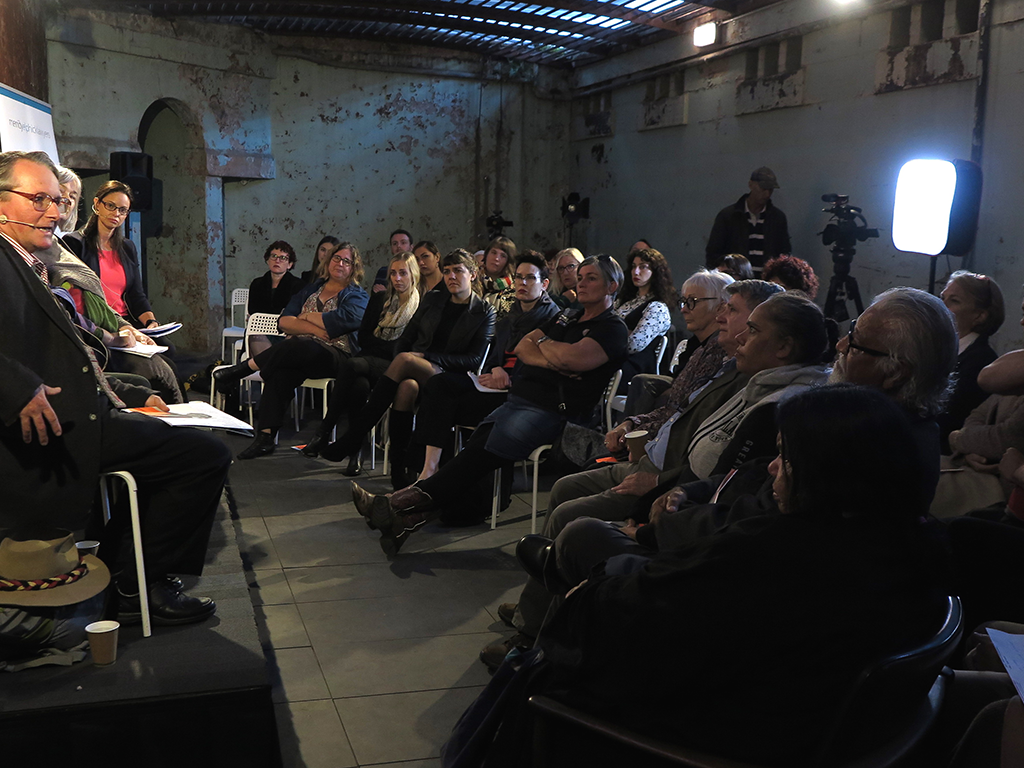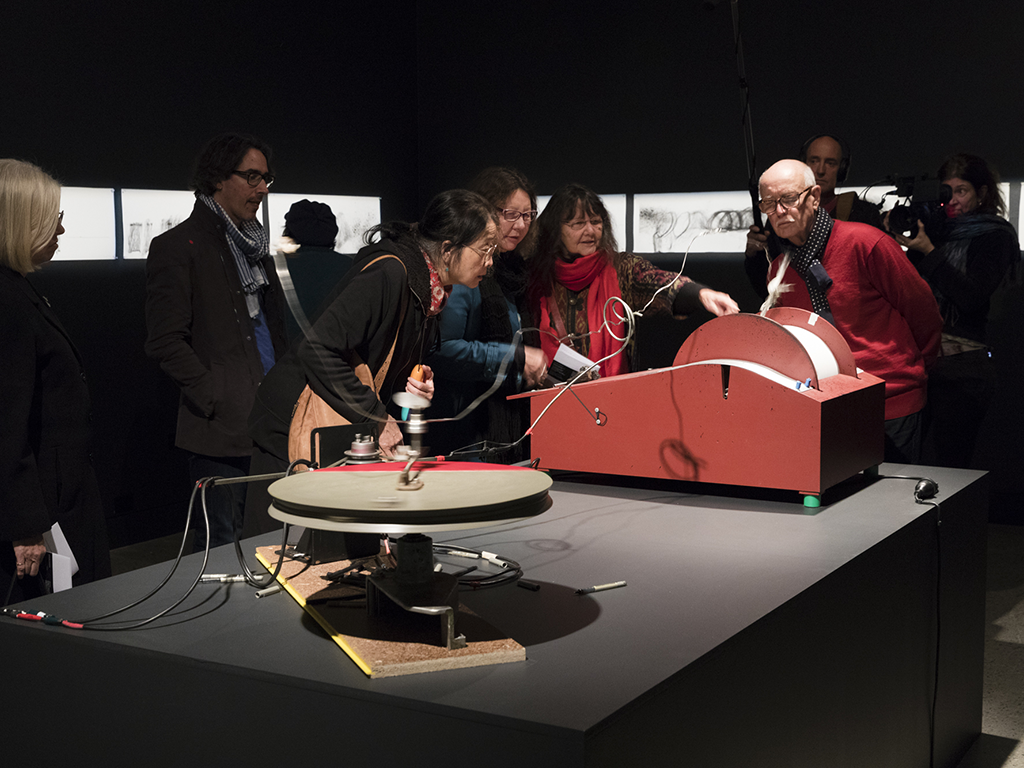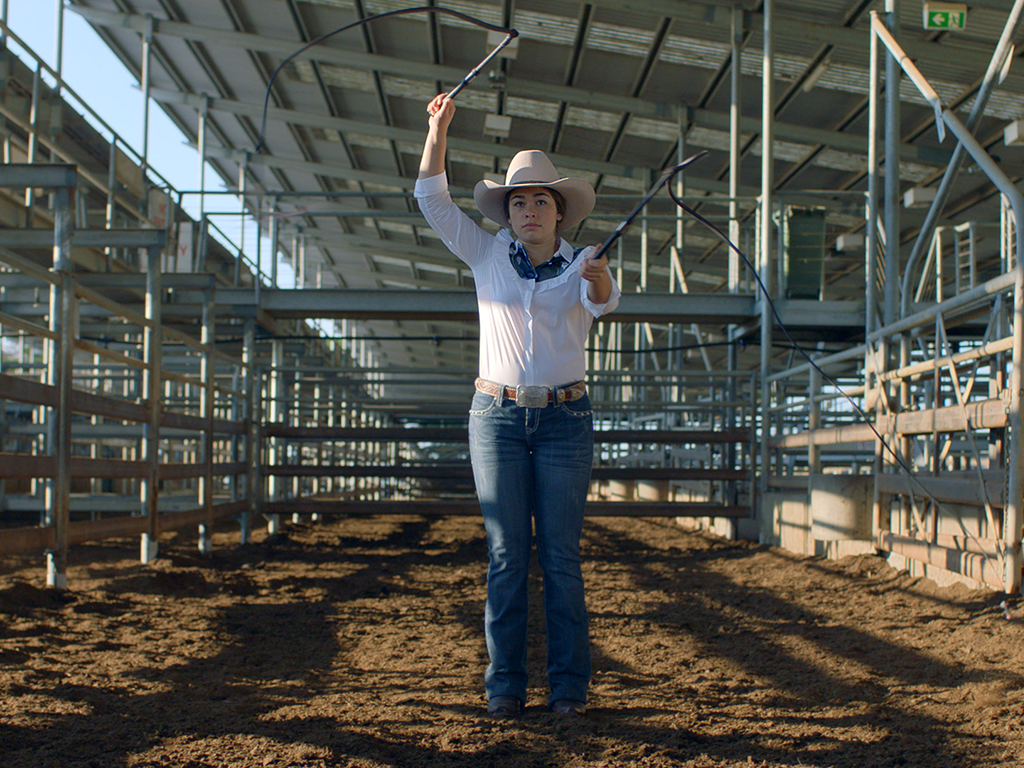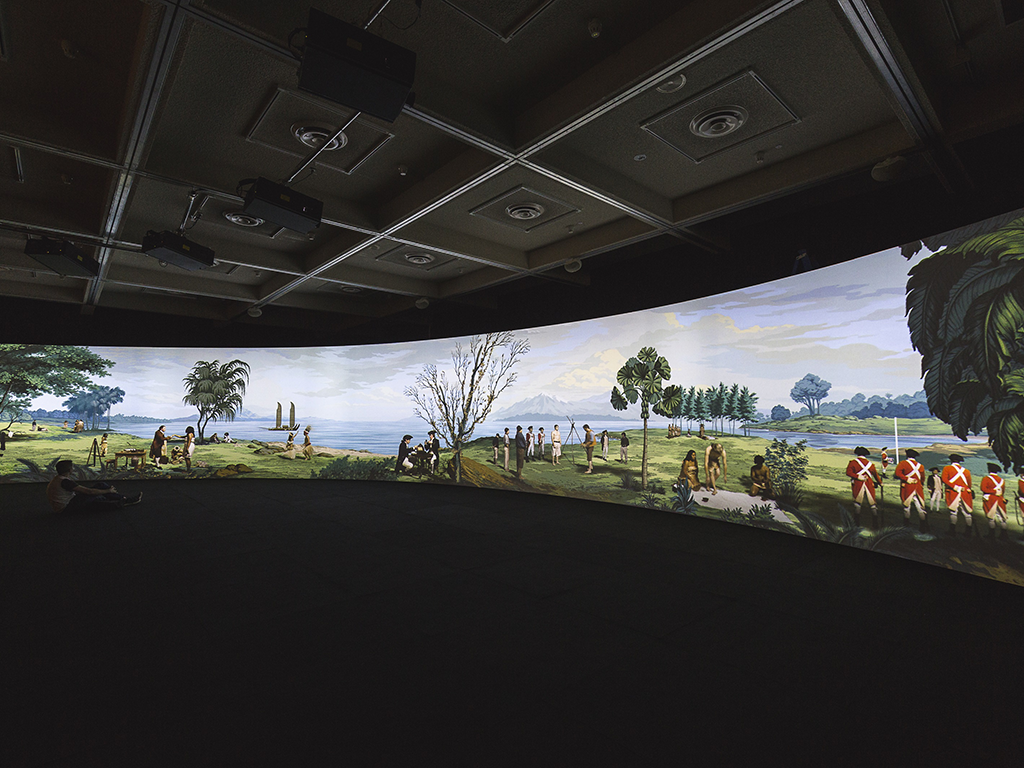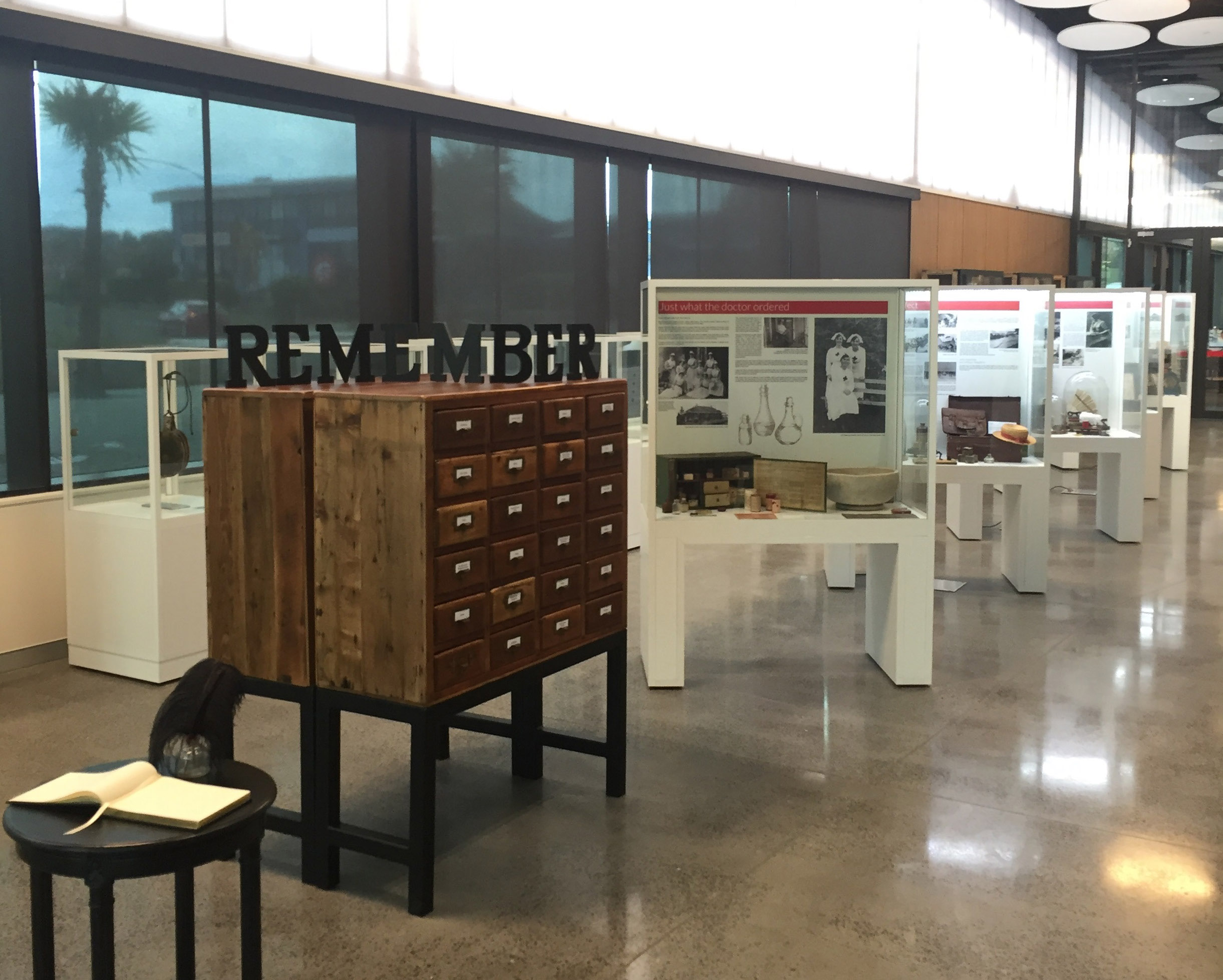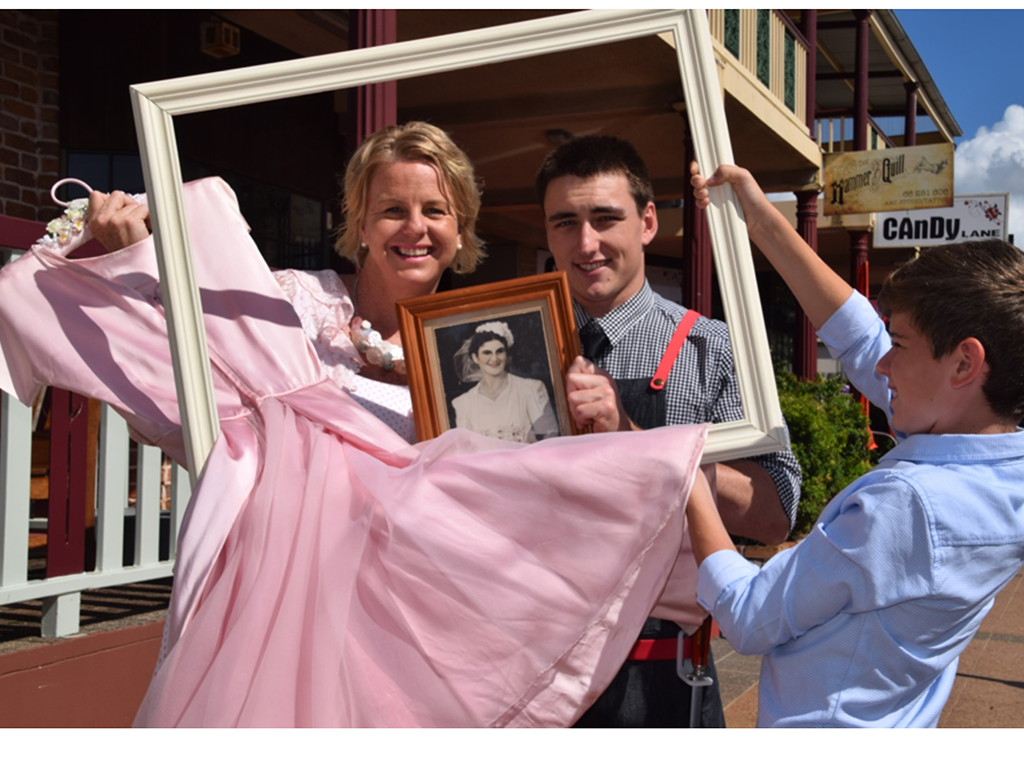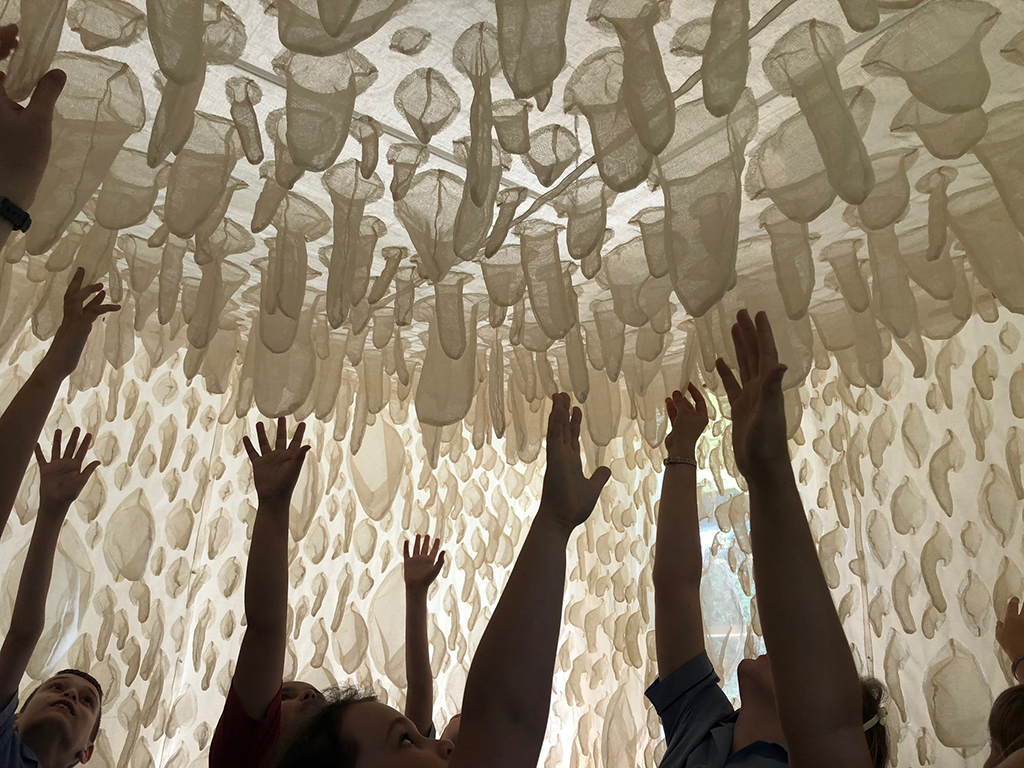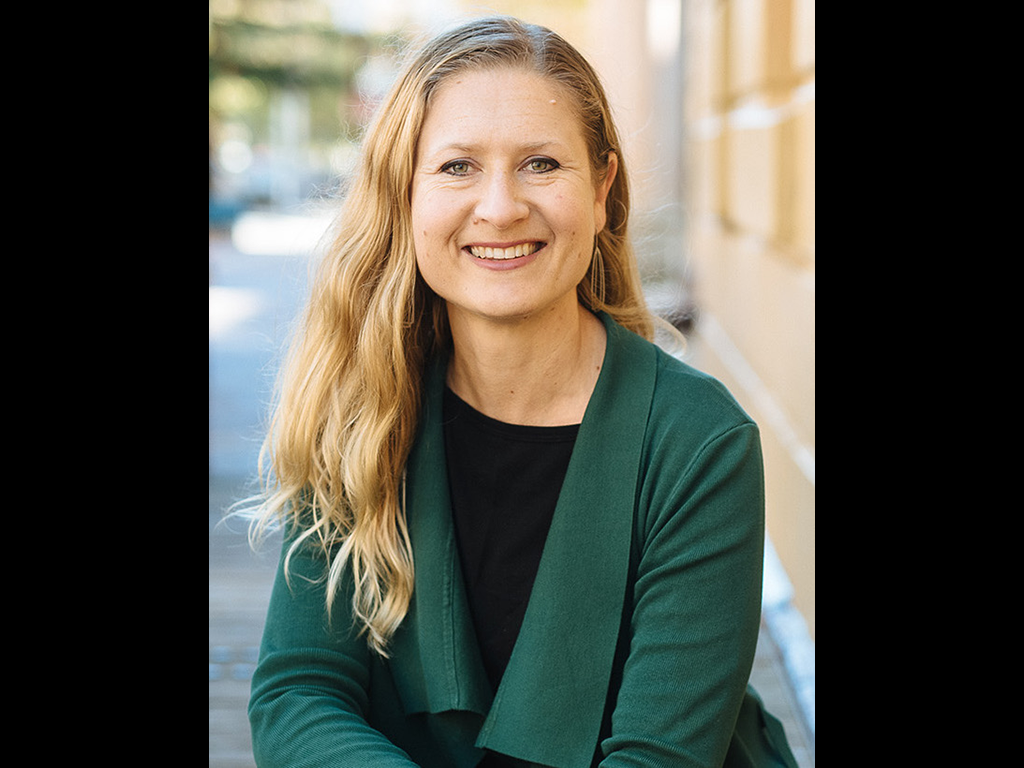Winners 2018
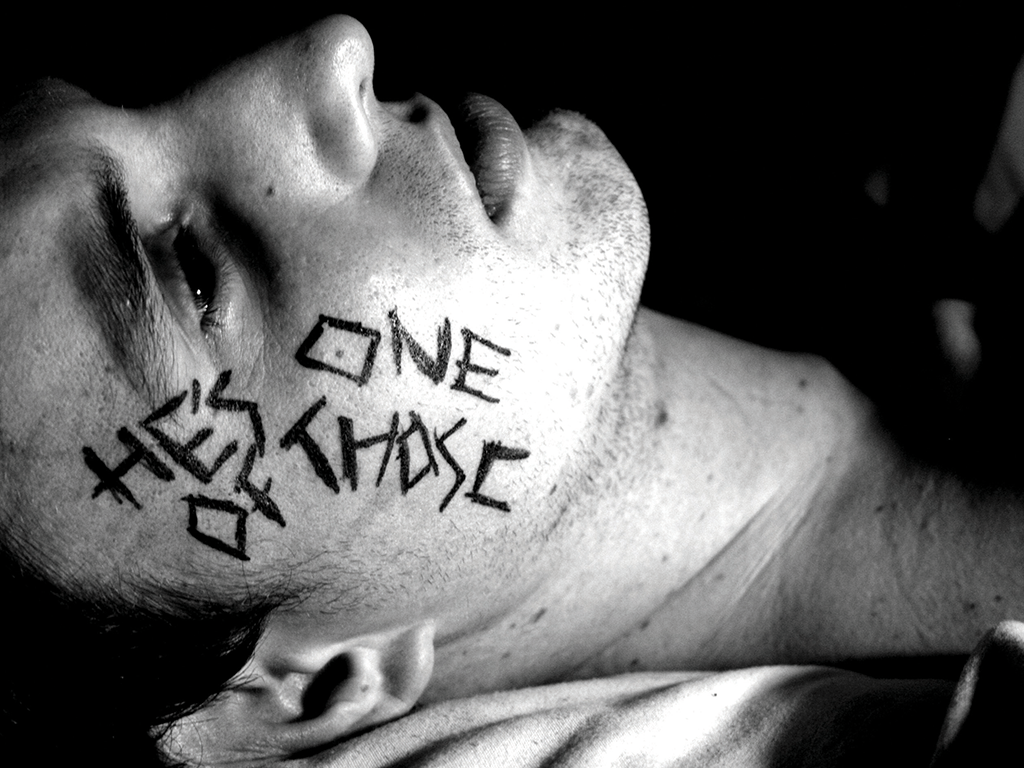
EXHIBITION PROJECTS – GALLERIES: Winner
Bathurst Regional Art Gallery - The Unflinching Gaze: photo media and the male figure

EXHIBITION PROJECTS – GALLERIES: Highly commended
Leo Kelly Blacktown Arts Centre - BalikBayan: Contemporary Filipino-Australia Art
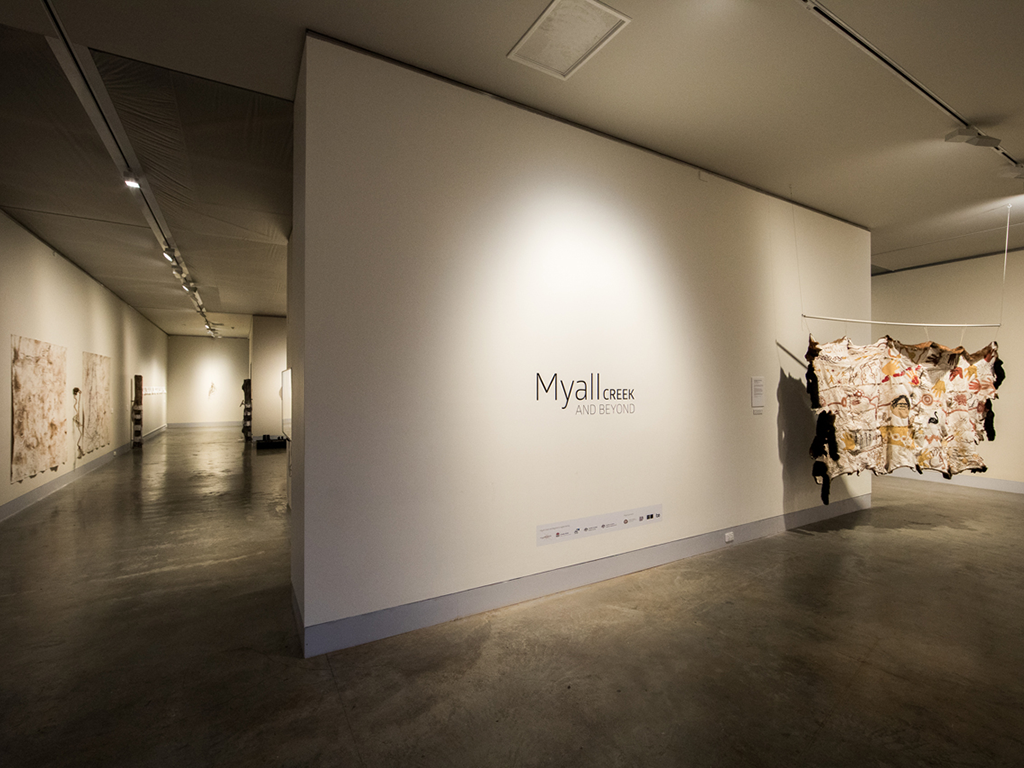
EXHIBITION PROJECTS – GALLERIES: Highly commended
New England Regional Art Museum - Myall Creek and Beyond
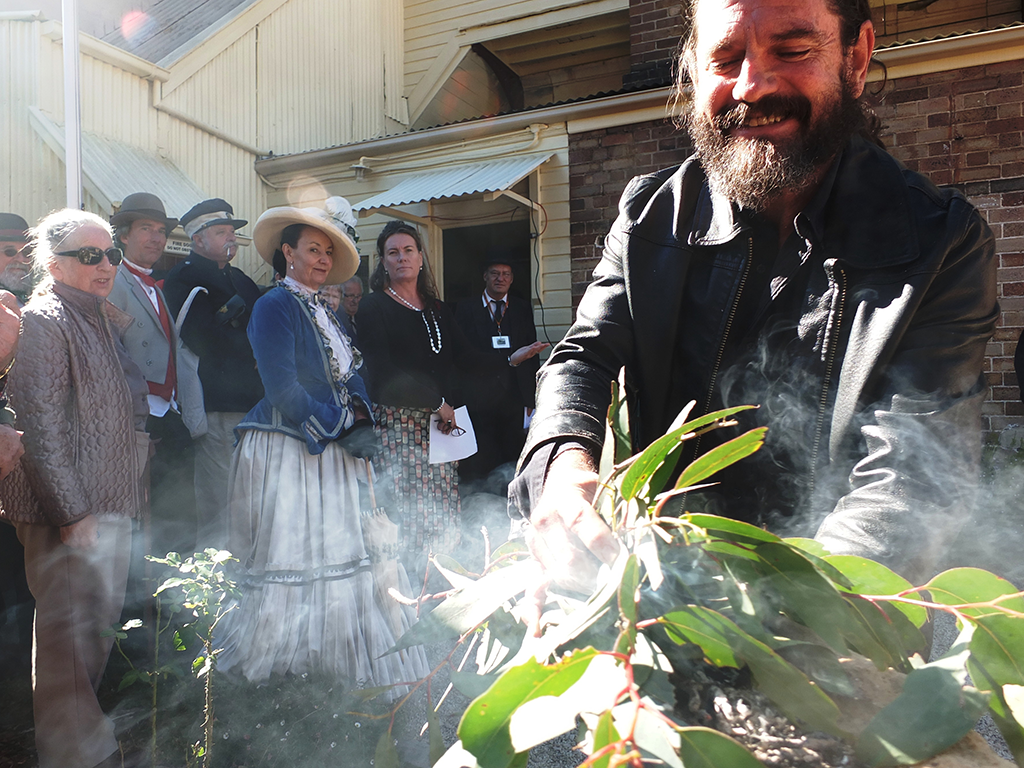
EXHIBITION PROJECTS – MUSEUMS: Highly Commended
Mount Victoria & District Historical Society Museum 150th Anniversary of Railway in Mt Victoria Exhibition
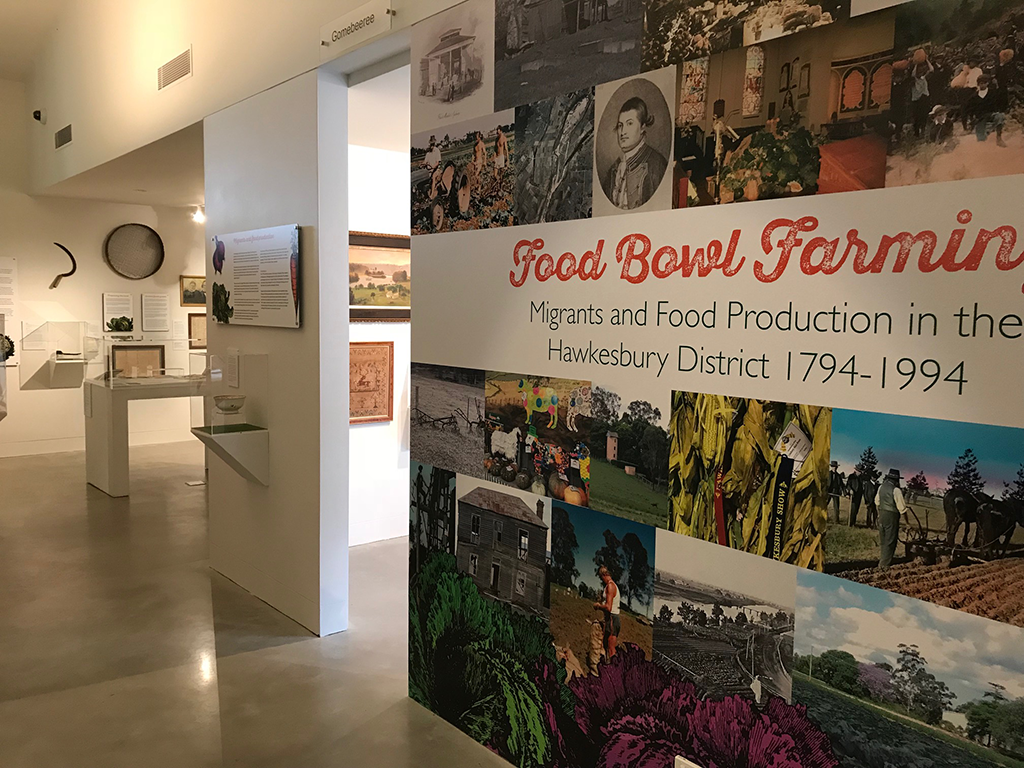
EXHIBITION PROJECTS – MUSEUMS: Highly Commended
Hawkesbury Regional Museum - Food Bowl Farming : Migrants and Food Production in the Hawkesbury District 1794-1994
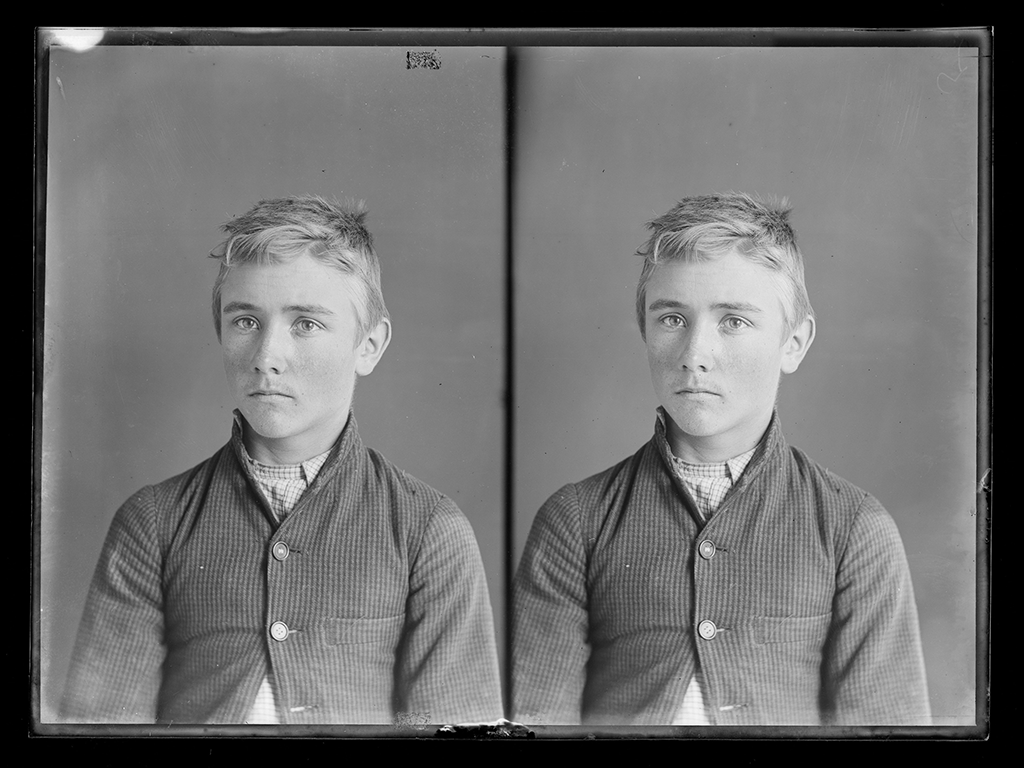
EXHIBITION PROJECTS – MUSEUMS: Highly Commended
State Archives NSW - Captured: Portraits of Crime, 1870 - 1930

EXHIBITION PROJECTS – MUSEUMS: Highly Commended
Sydney Living Museums - The Moderns: European designers in Sydney
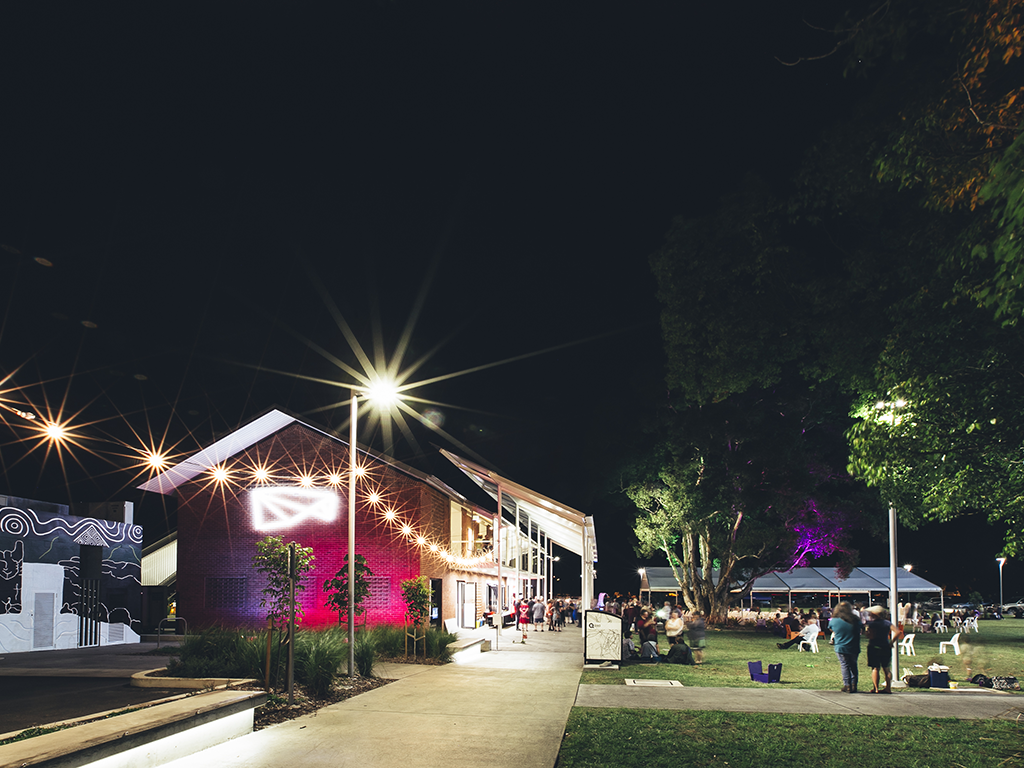
CBCS PROGRAMS: Winner
Lismore Regional Gallery - Lismore Regional Gallery and Lismore Quadrangle

ENGAGEMENT PROGRAMS: Winner
Bank Art Museum Moree - Yeladu! Kamilaroi Art Today artist residency

ENGAGEMENT PROGRAMS: Winner
C3West (Museum of Contemporary Art Australia) and Leo Kelly Blacktown Arts Centre Blacktown Native Institution Project
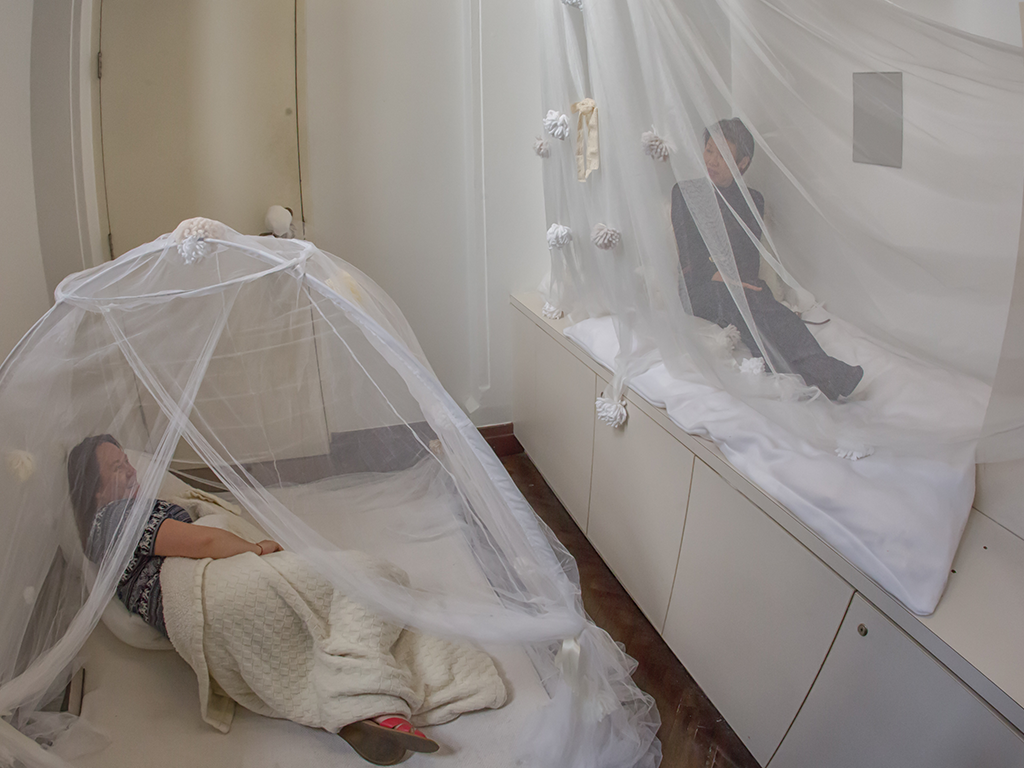
ENGAGEMENT PROGRAMS: Highly Commended
National Institute of Experimental Art, UNSW - Awkward Conversations
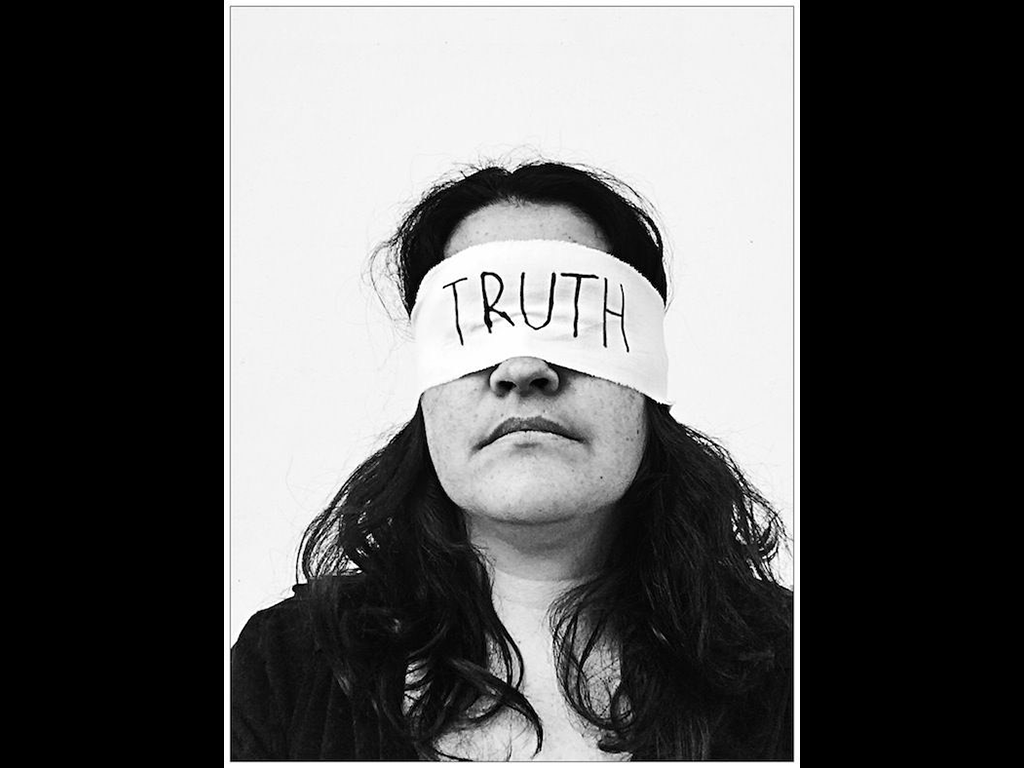
ACHAA AWARD - EXCELLENCE BY AN ABORIGINAL CURATOR
Bianca Beetson - New England Regional Art Museum: Myall Creek and beyond
| EXHIBITION PROJECTS – GALLERIES VOLUNTEER ORGANISATIONS OR ORGANISATIONS WITH 2 OR LESS PAID STAFF |
Winner
The Lock-Up
justiceINjustice
In this unique collaborative project, artists and lawyers worked together to explore several high profile public interest cases that underline issues of injustice and marginalisation. The project included an exhibition, a panel as part of Newcastle Writers Festival, an Art & Law Symposium and a curated music event.
Seven contemporary Australian artists created six new works for the exhibition. Case material, information about inner workings of each case, lawyers’ professional perspectives and conversations with family members of victims, allowed the artists unprecedented insight to produce deeply informed works presenting audiences with new ways of considering cases that had become well known through the media. The project involved over 50 individuals working together to develop and present this complex, multi-layered exploration of injustice and associated social and personal impact.
Songs for Justice, a specially commissioned evening of music in conjunction with the exhibit, featured highly-regarded singer songwriters Grace Turner and Tonchi Macintosh performing songs about the cases of Eddie Murray, Cornelia Rau and Roni Levi, written by lawyer Ray Watterson who worked on the cases, with music arranged by Turner and McIntosh. The Art & Law: Putting Justice into Practice symposium was a unique and powerful coming together of artists, lawyers, writers, academics, family members and students with the general public to explore issues raised through the exhibition.
| EXHIBITION PROJECTS – GALLERIES SMALL/MEDIUM ORGANISATIONS WITH 3 – 10 PAID STAFF |
Winner
Bathurst Regional Art Gallery
The Unflinching Gaze: photo media and the male figure
This exhibition, curated by Richard Perram, surveyed how the male figure has been depicted using photographic & digital media over the last 140 years. A partnership project with the Leslie-Lohman Museum of Gay & Lesbian Art, NY, it sought to deliver a ground-breaking exhibition to regional NSW, raise awareness of LGBTQIA+ issues and attract new audiences to the Gallery.
The objectives of the exhibition were threefold; to create a niche tourism experience exclusive toBathurst, to reach out to the LGBTQIA+ community in regional and metropolitan centres and to provide the people of the Bathurst region with a world class photo-media exhibition.
Themes dealt not only with aesthetic concerns but also engaged the community in a discussion around social issues.
Importantly, the exhibition placed Australian artists within both an international and a queer context. The Australian artists in this exhibition embraced its queer gaze as a way for their work to be considered outside the orthodoxy of most curatorial considerations. Commissioning new works by Liam Benson and Owen Leong also provided these artists with an opportunity t address LGBTQIA+ issues in their practice.
Highly Commended
Hazelhurst Arts Centre
Dream Machines
This project brought together five artists and collaboratives who are contemporary polymaths; whose practice intersects art, science, technology, engineering and mathematics. These artists are at the forefront of contemporary art practice in Australia, producing functional artworks and imagined machines for audiences to engage and interact with.
Coinciding with National Science Week, the exhibition was a celebration of innovative and sustainable art practices that created inspiring inventions that were also artworks. At the core of the project were ideas around DIY aesthetics, the adaptation of utilitarian objects, machine aesthetics, hacking and re-purposing, and how creativity is integral to innovation. These works aligned with recent international focus on the STEAM movement, recognising the equal importance of Arts in the pursuit of innovation and excellence, alongside Science, Technology, Engineering and Maths.
The exhibition opened up the audience’s imagination to the possibilities of creation, while challenging preconceptions of what art could be in a gallery environment. Interactive works engaged audiences in new ways and asked them to think about design, functionality and playful repurposing.
A Make Your Own Dream Machine competition also challenged school-aged students to respond to the exhibition themes by imagining and creating their own functional devices.
Highly Commended
Leo Kelly Blacktown Arts Centre
BalikBayan: Contemporary Filipino-Australian Art
This multi-artform and community activation project celebrated and uncovered contempor Philippine arts and culture. Created around Blacktown’s large Filipino community, the project was part of the Bayanihan Philippine Art Project.
The Gallery was transformed into a gathering space of intersecting contemporary art forms, community activations, workshops and events. The vibrant program celebrated one of the largest communities in the region and featured Sydney and Manila based artists with Filipino ancestry whose works explore projected futures or look back towards their origin.
This community engaged program was supported by local Filipino community arts and cultural advocates, Sinta Group, feminist activists, local community groups, Asian Women at Work, and the Philippine Australian Community Services Inc.
The Sydney-wide partnership also included the Art Gallery of New South Wales, Campbelltown Arts Centre, Mosman Art Gallery, Auburn Peacock Gallery and M&G NSW, in association with the Philippine Consulate. The consortium of partners shared resources and collaborated on a project- wide marketing strategy to reach new audiences across Sydney, and to deliver projects on multiple sites that shared artists and artworks. The intense collaboration enabled institutional partnerships to develop further and the artistically-led activities engaged audiences in new and unexpected ways.
Highly Commended
New England Regional Art Museum
Myall Creek and Beyond
The Gallery along with The Friends of Myall Creek Memorial (FMCM), Armidale Aboriginal Keeping Place and University of New England produced a program of exhibitions, public programs and a symposium that explored the history and on-going impact of the 1838 massacre of Aboriginal people at Myall Creek. The project included multiple pathways to encourage engagement with a range of audiences, particularly First Nation People.
The Myall Creek massacre is significant in Australian history because it was the only time when white men were arrested, charged and hanged for the massacre of First Nation Peoples. Newly commissioned works explored this difficult shared history to increase awareness and considered discourse about these events and their continued impact on both Aboriginal and non-Aboriginal people. Accompanying cultural and community events were aimed at building the profile of the Myall Creek Memorial as a vital site for reconciliation and to encourage increased participation in their annual commemoration.
The project was informed by a process of community consultation facilitated by a partnership with the FMCM. Connected Aboriginal communities were highly involved in all aspects of the project as consultants, workshop participants and facilitators.
Importantly the program was delivered in multiple locations within the region ensuring that the program was accessible to multiple communities and that barriers of distance were minimised.
Highly Commended
Wagga Wagga Art Gallery
The Long Paddock
This project was a collective reimagining of NSW’s Travelling Stock Routes (TSRs), curated by Joni Taylor. These shared regional tracks, still reserved for droving, cover more than 600,000 hectares across NSW. Artists developed site-specific works exploring the past, present and future of these unique routes. The project engaged the community in sharing the historical, cultural and environmental significance of these changing landscapes.
Over two years invited artists conducted site- specific research across the TSR’s. A series of prototypes were created using field recordings, ephemeral sculpture, temporary architecture, land art, and film. The outcomes of this project were then presented in an exhibition including nine newly commissioned large-scale works, a publication, and a robust suite of public programs and site-specific events relevant to the region.
Alongside the artworks is an ongoing body of research looking at Australian TSRs in the context of other disappearing world-wide cultural routes. The commissioned Drovers Plant, designed by Spanish collective Grandeza and housed in an adapted cattle crush, created a gallery intervention that presented an ongoing audio archive of local TSR stories. These stories were added to as the exhibition travelled. This nomadic structure could be taken outside of the gallery onto the stockroutes t emselves and facilitated the public program of discussions, roundtables and performances.
| EXHIBITION PROJECTS – GALLERIES LARGE ORGANISATIONS WITH 11 OR MORE PAID STAFF |
Winner
Campbelltown Arts Centre
Lisa Reihana|Cinemania
This first ever Australian survey exhibition of New Zealand artist Lisa Reihana showcased three decades of video and photographic works which underscore her international status as a pioneer of experimental video art and multimedia installations.
An artist of Māori and British descent, Reihana works across digital video, film, photography, sound, performance, sculpture and design. She unpacks complex ideas around Māori identity and interrogates the colonial gaze, fabrication of history and representation of Indigenous peoples.
The Gallery’s program links local Western Sydney stories to broader global issues and has a strong history of practice in community engaged contemporary art projects. Reihana’s practice aligns with this, and is driven by collaborative work with First Nation communities across the Pacific.
A number of activations to engage the local Dharawal community and the Pacific community in Campbelltown were produced alongside the exhibition. These included a workshop exploring traditional and contemporary approaches toward individual and cultural representation as inspired by themes of costume and character and a street art workshop exploring the reclamation of personal and public space inspired by themes of costume and character and a street art workshop exploring the reclamation of personal and public space inspired by Reihana’s appropriation of colonial wallpaper
Highly Commended
Murray Art Museum Albury
Material Sound
This multiform project, curated by Caleb Kelly, drew together six art practitioners each created an experience of sound within installations constructed from everyday materials. The core elements of the project, an exhibition and a program of performances and workshops, all contributed to its success.
The exhibiting artists each challenge the stability of materials in their practice. Handmade instruments and electronics, recycled electronic components, outmoded technologies, fake technologies, imagined sounds and silences formed a series of dynamic installations that challenged the way we think about materiality in a cumulative sound experience.
Public programs included live performances, hands on workshops, a meet and greet BBQ and a closing dance party. The Gallery also collaborated with local Beechworth musicians Sister Cities; Melbourne based composer and musician Ela Stiles and Sydney based musician and artist DJ Yoni.
The local audience came without preconceived ideas on experimental art and so were open to new experiences. The project also fostered increased literacy within audiences with regard to subsequent sound and new media work presented at the museum. The unparalleled success of the exhibition has led to a second iteration to be presented at Black Mountain College Museum + Art Center, Asheville, North Carolina in mid 2019.
| EXHIBITION PROJECTS – MUSEUMS VOLUNTEER ORGANISATIONS OR ORGANISATIONS WITH 2 OR LESS PAID STAFF |
Winner
Not Awarded
Highly Commended
Mount Victoria & District Historical Society Museum
150th Anniversary of Railway in Mt Victoria Exhibition
Exploring themes beyond steam trains this exhibition uncovered a rich social history. The exhibition took the form of a photographic and multimedia display relating to the arrival of mechanised transport to the district and explored numerous themes including; the impact on Indigenous people, social history, industry, agriculture, architecture, tourism and education.
Newly developed interactive elements including a touch screen display, digital projections and local oral history recordings were funded by the Federal Government Stronger Communities program and have been well received by audiences.
During the Mt Victoria Great Train Weekend the Museum extended its opening hours, culminating in record attendance. Partnerships with local cultural organisations were developed in an effort to bring the local history to life. Members of the Lithgow Living History Group attended the weekend in Victorian era costume, re-enacting scenes of our shared heritage around the museum and railway station. Unions NSW Historical group loaned a reproduction railway union banner which was displayed for the duration of the exhibition.
The local Indigenous community was engaged to consult on the project and to develop text content for the exhibition. Chris Tobin also performed a Welcome to Country and smoking ceremony to celebrate the opening of the exhibition.
| EXHIBITION PROJECTS – MUSEUMS SMALL/MEDIUM ORGANISATIONS WITH 3 – 10 PAID STAFF |
Winner
Fairfield City Museum and Gallery
Fairfield on Film
This project explored the evolution of Fairfield’s film industry, tracing the emergence of early picture palaces to the modern burgeoning film sector reflective of our society.
Items from the collection were incorporated into the exhibition alongside photographs, interviews with local filmmakers and behind-the-scenes films. Posters and videos by PYT Fairfield and Team 9Lives, who have produced numerous youth films, also featured. The project featured newly commissioned work by Curious Creators and a film skills program by Curious Works, which provided professional employment opportunities. The local community provided support by loaning images and objects to create a timeline of camera technology from early box brownies, portable film projectors and folding cameras to digital video cameras.
The project successfully surveyed Fairfield’s contribution and influence in telling stories about Australian life, particularly the strong voices from our migrant residents whose experiences resonate nationally. Contemporary short films by local filmmakers spoke about the representation, or misrepresentation, of migrants and refugees in the Australian film ecology in creative and humorous ways.
The project was innovative as it married old time technology, contemporary art practices, modern film making techniques, refugee and migrant stories and industry and community engagement. This resulted in a comprehensive story about filmmaking in Fairfield and its broad reach.
Highly Commended
Hawkesbury Regional Museum
Food Bowl Farming : Migrants and Food Production in the Hawkesbury District 1794-1994
This exhibition, developed by guest curator Kate Gahan, traced the cultural history of food production in the Hawkesbury since 1794. It explored the lives of migrant farmers, patterns of land use and cultivation, buildings, tools and technology and the influence of cultural tradition and ethnicity on local farming.
Included were the Chinese market gardeners of the late 19th century, and the important post WWII migrants who continued to shape both what was farmed and how it was farmed. In recent times migrant families of various Asian backgrounds have continued to develop these narratives. This exhibition represents the first time an intensive research project has been undertaken to interpret and present the history of migration in the development of farming in the Hawkesbury district.
The opening event was planned to coincide with International Museums Day and the Museum’s tenth anniversary. As a result, some 250 people attended the day to view the exhibition, hear the curator talk and enjoy garden games, food, entertainment and heritage walks.
Partners included NSW Migration Heritage Centre, Western Sydney University and Kurrajong- Comleroy Historical Society. The Museum also built strong relationships with the local migrant farming community—people who in their normal day to day life would not interact with the museum.
| EXHIBITION PROJECTS – MUSEUMS LARGE ORGANISATIONS WITH 11 OR MORE PAID STAFF |
Winner
Australian Museum
Gadi
Developed in partnership with local Aboriginal Elders and communities this exhibition showcased the rich culture and history of the Country now known as Sydney City. It featured 8,000 archaeological pieces, rare objects, new cultural material made by Gadigal Elders, stories, film, songs and a sculptural acquisition dedicated to mahn (Aboriginal fisherwomen). This exhibition was a First Nations-led response to colonial impact and a place to share custodial stories.
The Museum is a place of authority on Aboriginal people and culture, but have the representations been authentic? How have historic representations of people affected the way they are perceived by the public? These questions have created a new space for First Nations arts and cultural workers at the Museum, to lead, rather than be led.
This project went far beyond simplistic notions of consultation; the Museum supported the unfiltered expression of culture, led by, and from within, the Gadigal community. The exhibition broke ground and challenged dominant concepts of roles, gender and societal notions of pre-colonisation. The normalisation of Aborginal language through the exhibition also aimed to express the extancy of Gadigal culture.
Highly Commended
State Archives NSW
Captured: Portraits of Crime, 1870 – 1930
This project explored stories of men, women and children incarcerated in NSW gaols from 1870 to 1930. It was presented through an exhibition in Western Sydney, regional touring exhibition and online exhibition. The project drew on the Archives’ collection of Gaol Photographic Description Books dating from 1870 to 1930 to illuminate the stories of ordinary people, who, for one reason or another, were convicted of criminal offences and imprisoned in NSW gaols over a period of 60 transformational years.
Mirroring the records’ combination of image and text, the exhibition design integrated each prisoner’s portrait with their story which was composed especially for the project. The contemporary exhibition design optimised the scale, depth, tone and emotion that the digital reproduction of glass plate negatives enables, and used typographic variations to distinguish different voices in a story.
In partnership with the Australian Theatre for Young People writer, Debra Oswald, was commissioned to write a creative work that re-imagined the story of one young prisoner from his perspective. Her piece was produced and performed by the theatre, and is included as a sound work in the online exhibition.
Highly Commended
Sydney Living Museums
The Moderns: European Designers in Sydney
This exhibition celebrated a forgotten aspect of Australian modernism, highlighting the unknown stories of Sydney’s mid-century émigré architects, interior designers and furniture makers. Developed from a body of new research by guest curator Rebecca Hawcroft, the exhibition uncovered the lives, projects and legacy of a group of largely forgotten creatives, patrons, clients and property developers.
The exhibition was the first display of its kind to focus on the design legacy of Sydney’s émigré community. Through extensive first-hand research, direct descendants of key émigré practitioners were contacted to discuss the work of their parents and grandparents, many for the first time. These relationships allowed for the discovery of previously unknown stories, connections and objects, and fostered the recording of cultural heritage that may otherwise have been lost.
The Museum team also developed direct relationships with a number of European museum institutions, including the Victoria & Albert Museum in London, the Budapest Applied Arts Museum and the Slovakian Jewish Museum. This cooperative partnership included correspondence and information sharing relating to research, knowledge and collection items.
| CAPACITY BUILDING, CAPITAL & SUSTAINABILITY PROGRAMS VOLUNTEER ORGANISATIONS OR ORGANISATIONS WITH 2 OR LESS PAID STAFF |
Winner
Shellharbour City Museum
New Build
In 2018, Shellharbour City Council delivered the new Shellharbour City Museum; a contemporary, welcoming facility with permanent and temporary exhibition spaces, research room, and climate controlled storage. The Museum opened this year after a coordinated move from the small, aging premises to the Shellharbour Civic Centre, where it is co-located with the Library and other key Council facilities.
In preparation for the move to the new facility, Museum staff and volunteers contributed to the digital cataloguing of around 2000 museum objects. The move created the incentive to de-accession insignificant items, and thereby improve the overall significance of the collection.
The sustainability of staffing has been enhanced by the co-location with Shellharbour’s City Library. The initiative of multi-skilling across the Libraries and Museum team has supplemented the position of Museum Curator. Partnerships with the Libraries Programs & Partnerships team has further strengthened the capacity to deliver museum programs and has already resulted in a number of joint programs delivered to local school students.
A Memorandum of Understanding with the Tongarra Heritage Society has provided a mutual support mechanism between the Society and the Museum that serves to ensure the two organisations work together to preserve the history and heritage of Shellharbour City.
Highly Commended
Greens Gunyah Museum
Double the Space, Double the History
This capital improvement, fundraising and partnership project enabled the Museum to expand and redesign exhibitions of machinery collections via the purchase and upgrade of an industrial building located adjacent to the Museum grounds.
Indirect outcomes of the program have included an increase in volunteers leading to the capacity for longer museum opening hours, better collection care, increased audience access and the creation of a shared community space and cultural hub. Within budget parameters, the program has endeavoured to ensure that the works support green goals.
Following the success of the project, the Museum has been assisting other regional volunteer-run museums seeking advice on the development of sustainable practise in their own communities.
The Museum raised over $320,000 to purchase the building and ensure that it met with National Standards. The project is the result of significant planning and sustained partnerships with community, council, state and federal government and other regional agencies. The heart of this project’s success lies with the whole of community approach to development and sustainable practise and the maintenance of strategic partnerships as an integral part of the Museum’s operations.
| CAPACITY BUILDING, CAPITAL & SUSTAINABILITY PROGRAMS SMALL/MEDIUM ORGANISATIONS WITH 3 – 10 PAID STAFF |
Winner
Lismore Regional Gallery
Lismore Regional Gallery and Lismore Quadrangle
This project involved the relocation of the Gallery to a new, redeveloped facility, and the creation of a CBD focused gathering space, the Lismore Quadrangle. The Gallery has been an important visual arts facility for over 60 years, but has been hampered in what it could achieve due to its deficient facilities. For many decades people sought to realise a new gallery project. This finally came to fruition when the Gallery opened its doors in a newly redeveloped facility, designed by Bangalow-based Dominic Finlay Jones and constructed by Bennetts (Lismore).
The project has facilitated a greater degree of partnership activity, collection donations, sponsorship, income generation and above all, has cemented the Gallery’s place as a key visual arts facility in regional Australia. The new space has allowed the presentation of significant work by international artists such as Anish Kapoor, Jim Lambie, Daniel Buren, Picasso, Miro and Rembrandt alongside high quality locally developed exhibitions.
Additionally, an ongoing program of events and activity in the Lismore Quadrangle has led to increased visitation. This has included the Lismore Lantern Parade, theatrical performances, monthly music events, children’s programs, protests and community organised events—as well as acting as an informal outdoor public space.
| CAPACITY BUILDING, CAPITAL & SUSTAINABILITY PROGRAMS LARGE ORGANISATIONS WITH 11 OR MORE PAID STAFF |
Winner
Not Awarded
| ENGAGEMENT PROGRAMS VOLUNTEER ORGANISATIONS OR ORGANISATIONS WITH 2 OR LESS PAID STAFF |
Winner
Crawford House Museum
Frock Club – life in clothes
This innovative social inclusion and community engagement program was designed to bring together people who share a love and appreciation of fashion. It is also a conservation program where fragile garments from the collection are reproduced or re-engineered for educational purposes, helping bring fashion history to life. The project acts not only as a monthly social networking activity, but also delivers educational content in an innovative way. It delves into the Museum’s dress archives to source and examine artefacts that inform our present day ideas about fashion.
Based on enthusiastic community response to past fashion exhibitions, the Museum made the bold decision to expand the museum experience through a fashion engagement program. The community was consulted through established networks including local retail, social and service clubs, schools, local councillors and museum membership.
Central to the project were volunteers who brought a unique combined set of skills from their experience in the fashion industry, higher education and training and public programming in metropolitan museums.
Successful outcomes have included increased program attendance and participation in social history, increased awareness of the Museum and the program, additional voluntee s and diversified income stream for the Museum.
| ENGAGEMENT PROGRAMS SMALL/MEDIUM ORGANISATIONS WITH 3 – 10 PAID STAFF |
Winner
Bank Art Museum Moree
Yeladu! Kamilaroi Art Today artist residency
This artist residency program partnered with Moree Secondary College’s SistaSpeak and BroSpeak Cultural and Mentoring Program to produce a permanent mural designed and created by Kamilaroi students. Artist Warraba Weatherall ran an initial brainstorming workshop, followed by a design phase and three days of student painting. The artist residency also supported an innovative exhibition which included a commissioned temporary wall mural by the artist within the exhibition space.
This engagement program produced the first mural created in a Moree school that was artist facilitated but wholly and directly designed and painted by Aboriginal students. Timed to be the backdrop for NAIDOC celebrations, a key priority was to ensure that students felt ownership over the finished product and all design decisions were made following student consultation.
The artist residency connected with the local high school to identify students from the school’s program who would benefit from engaging in contemporary street art with cultural respect. The project significantly impacted youth attitudes toward culture and property, and used street art as a form of expression to positively impact their community. The school has requested to enter into a formal partnership and collaborate on future projects, and the artist residency will continue each year.
Highly Commended
Penrith Regional Gallery & The Lewers Bequest
tactile
This exhibition was developed to enhance engagement for new and existing audience through the physicality of artworks that visitors were encouraged to touch and feel. Working with artists to realise sensory landscapes within the Lewers House gallery, the exhibition challenged and delighted audience expectations with works that were visually intriguing and physically accessible.
The exhibition created an opportunity to suspend the usual gallery rules and allowed artists to create experiences that would otherwise not be possible. For the audience, the Gallery offered visitors the opportunity to experience artwork in multiple ways through touch, sight, smell and sound, which in turn gave the artists opportunities to connect with audiences as engaged participants of their work.
The program was intended to create a more accessible environment for audiences, specifically those living with disability, or those, such as youth and family audiences, looking for interactive experiences outside of the norm. This exhibition focused on the sensory realm as a means of access, driving towards new target demographics by reframing the concept of how visitors interact with the site and developing a new pathway by which the Gallery could offer engagement. These levels of interactivity required the development of a new volunteer program that moved beyond invigilation and toward experience mediation.
| ENGAGEMENT PROGRAMS LARGE ORGANISATIONS WITH 11 OR MORE PAID STAFF |
Winner
C3West (Museum of Contemporary Art Australia) and Leo Kelly Blacktown Arts Centre
Blacktown Native Institution Project
Building on two previous art projects responding to the site of the Blacktown Native Institution, this iteration of the project brought artists and community together to raise awareness of the site’s significance, to heal, pay tribute to Aboriginal histories and to imagine a future for the site. Nine months of community consultation culminated in a spectacular onsite event which drew together more than 500 members of the local community.
Artists Tony Albert and Sharyn Egan joined with Moogahlin Performing Arts to work with local Aboriginal communities, responding to the history and bringing to life the culture of the site. Egan worked with local weavers to create a large-scale sculpture of flannel flowers in memory of the Institution’s residents, while Albert and local children used ceremony and objects to share positive memories across time. Moogahlin Performing Arts developed a dance performance with community members to honour local customs and growing up Aboriginal in Western Sydney, which included more than 40 young Aboriginal dancers.
This project has been integral in raising awareness of this important site, and in healing the site for local Aboriginal people. By acknowledging its painful colonial history alongside its much longer history of Aboriginal cultural practice, the project has fostered a renewed connection to site and Country for the many community members who were involved.
Highly Commended
Murray Art Museum Albury
Material Sound
This multiform project brought together artists from across Australia to present an exhibition of new work, a series of free public performances and workshops. The project aimed to generate an accumulative sound experience, encouraging repeat community engagement, and create a unique experience for each participant.
The project cultivated a significant platform for the development of the local community’s understanding of sound within the gallery and expanded the understanding of diverse approaches to contemporary art making. This was achieved through an integrated program of artist talks, performances and hands-on workshops held within the Museum and in the community. These outreach events offered audiences access to engage with contemporary Australian sound- based works on a hands-on level.
The Opening Weekend Festival of free public performances was widely embraced and highly attended. The Museum attracted 365 attendees across five public programs over two days with performances by exhibiting artists alongside nationally renowned sound artists.
The engagement of the local community proved to be an unprecedented success—it was widely embraced with many repeat visitors throughout the duration of the exhibition and attendees to multiple workshops and performances.
Highly Commended
National Institute of Experimental Art, UNSW
Awkward Conversations
A partnership between artists, community and mental health experts, this project sought to embed conversation about mental health into city life, offering inspiring, accessible one-on-one interactions in unique settings and formats. The innovative public art project was combined with a high impact engagement program for Mental Health Month.
The program was presented as part of the Big Anxiety Festival 2017 and played with the idea that conversation about mental health is inevitably awkward, setting creative artists and inspiring thinkers the task of making it inviting, accessible, stimulating, meaningful, personalised and actually enjoyable.
One on one conversations with diverse artists occurred inside pods, over a foot bath, at Customs House or walking through Circular Quay, with further group events at UNSW, the Museum of Applied Arts and Sciences, The Ethics Centre, the Art Gallery of New South Wales and the State Library of NSW.
The project broke new ground in providing original ways to have awkward conversations, lowering barriers to understanding and seeking help. As the Mental Health Commissioner acknowledged during the festival, this has the potential to save lives.
| INDIVIDUAL ACHIEVEMENT: VOLUNTEER |
Helen Price
Norfolk Island Museum
Helen Price has been the conservation volunteer at the Norfolk Island Museum for ten years. She worked as a conservator in Sydney institutions for many years and has spent her retirement years volunteering at a number of organisations on Norfolk Island.
Her role as a volunteer has involved identifying items that need conservation treatment and providing important preventative conservation measures including creating storage solutions for collection items, rehousing objects and in some cases conducting conservation treatments and documentation.
Price’s time and expertise have ensured that essential preventive strategies were put in place, including best practice object handling procedures and stable storage conditions. These time consuming jobs are often incredibly important to the integrity of the collection and her impact on the Museum has often gone unnoticed but has been pivotal in the collection’s long term preservation.
Price also runs conservation workshops for the Norfolk Island community. Open to the public, she helps educate participants on how best to care for paper objects, personal memorabilia and works of art. One of her most recent community projects was rehousing the Norfolk Island Land Titles, Birth Deaths and Marriages registers dated as early as 1853. The registers are still accessed today and the regular handling and limited storage options had led to many being in a very fragile state.
| INDIVIDUAL ACHIEVEMENT: PAID |
Jessi England
The Lock-Up
Jessi England is the Director of The Lock-Up. Her role encompasses a broad range of responsibilities, including curating, public programing and creative producing.
In 2014 England managed a shift in the organisation’s direction. Once operating as an artist-run space and museum, it was transformed under England’s guidance, into a multidisciplinary art space, with a fully curated artistic program. This shift not only increased funding opportunities for the organisation, but also provided the Hunter- based community with a new platform for local artists to present their work.
Since England’s interception, the Gallery has gained momentum as a well-known artspace and highly regarded as an innovative and progressive arts organisation, genuinely committed to experimental contemporary art practice. It has expanded its sponsorship relationships, as well as developed successful partnerships with other organisations and has created genuine community partnerships. Visitation has increased three-fold.
England’s understanding of the importance of collaborative and multilayered partnerships has built a depth to the program, created important strategic creative networks, developed new audiences, and consolidated the vision of the Gallery as a creative hub and enabled the ongoing success and sustainability of aligned cultural organisations.
| ACHAA AWARD FOR EXCELLENCE BY AN ABORIGINAL CURATOR |
Bianca Beetson
New England Regional Art Museum: Myall Creek and beyond
The Art Museum along with The Friends of Myall Creek Memorial, Armidale Aboriginal Keeping Place and University of New England produced a program of exhibitions, public programs and a symposium that explored the history and on-going impact of the 1838 massacre of Aboriginal people at Myall Creek.
Bianca Beetson was engaged as a guest curator to develop the curatorial direction of the NERAM exhibition. In this role she was responsible for selecting artists to, firstly participate in research residencies at the Memorial and surrounding region, and secondly produce new works responding to the history and site.
Beetson’s curatorial approach is discussed in her catalogue essay; The title, Myall Creek and beyond, refers to a very specific place, whilst the word ‘beyond’ could be interpreted as meaning to forget or move on. However, in the case of this exhibition ‘beyond’ means deepening and expanding the conversation. The artists selected for this exhibition were chosen for their ability to create work which does exactly this: deepen the conversation.
Beetson provided an essay and interpretive texts, directed the exhibition design and contributed to a number of public programs in the exhibition. She was also an important part of the dialogue with the community and ensured that sensitivity and protocols were implemented at each and every stage of the project.

